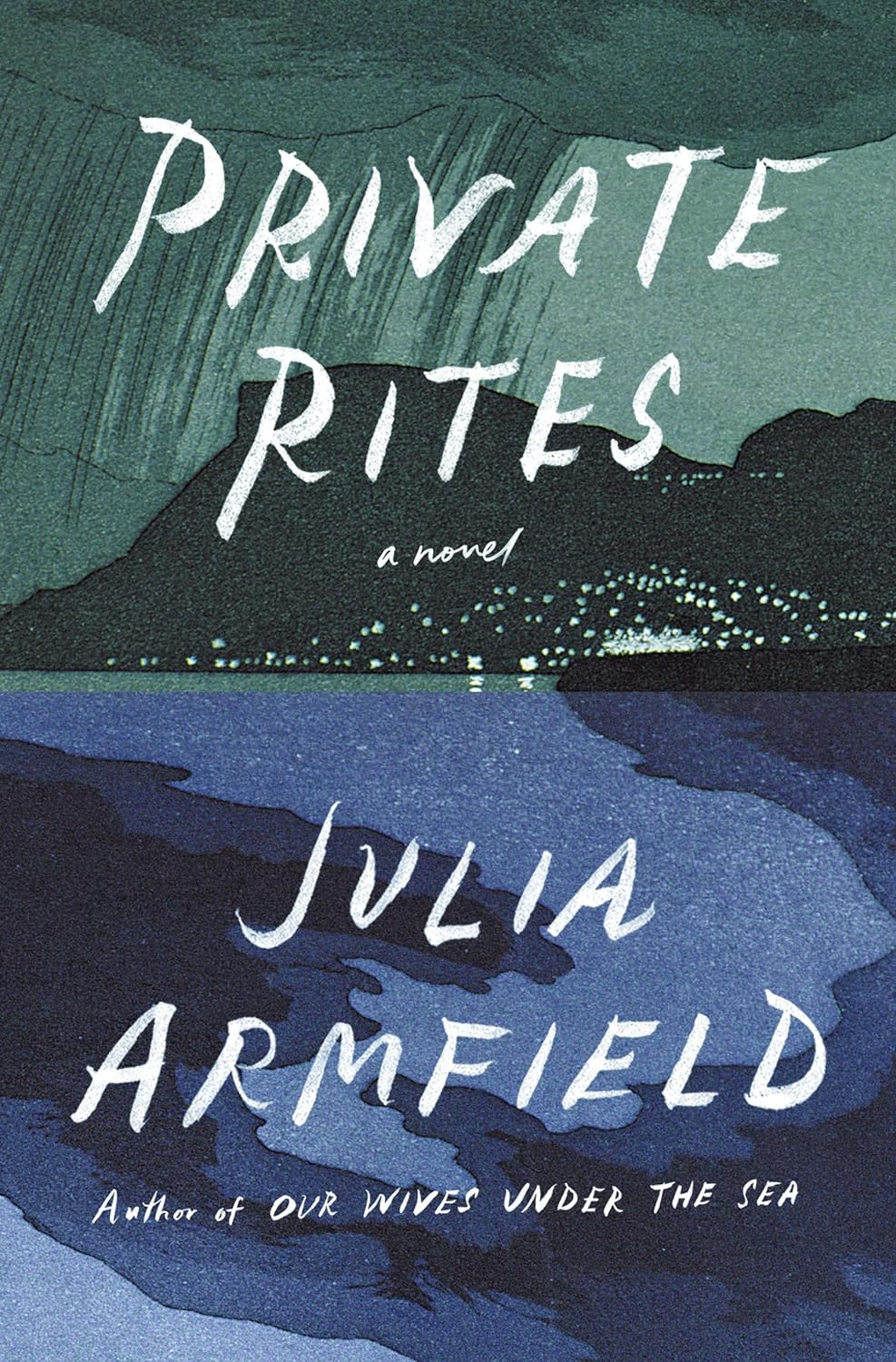Review of Private Rites by Julia Armfield

Private Rites
Julia Armfield
Flatiron Books, 2024, 304 pages
$27.99
Reviewed by Catherine Horowitz
When will you know that the apocalypse has arrived? When will the realization come that we’ve progressed too far in destroying the world to reverse it? Julia Armfield’s speculative novel Private Rites is a vivid depiction of an apocalypse of the mundane, where people make gradual adjustments to the world’s worsening conditions, ultimately doing what it takes to continue their lives around it.
In the world of Private Rites, there is heavy rainfall every day, with only a few minutes of respite. Water levels continue to rise. People live on the upper floors of collapsing high-rise buildings and take public boats to work, while the wealthy flee to less affected areas and use advanced technology to delay being impacted. This didn’t happen all at once; it was a gradual decline, with fewer and fewer sunny days until people were stuck trying to remember the last sunburn they had.
Amid this, Isla, Irene, and Agnes must navigate the death of their father and their own strained relationships. Isla is a high-strung eldest daughter, Irene is short-tempered, and Agnes, ten years younger than her sisters, is distant and impossible to reach. Their father was an acclaimed architect who designed many of the buildings adapted to the rising water levels but was absent and sometimes cruel to his daughters. The sisters are forced together when he dies and find themselves entrenched in conflicts both familial and widespread.
At its core, Private Rites is a beautiful and lifelike depiction of sibling and family relationships and their complexities. It puts words to facets of sibling relationships I hadn’t thought to name, like the “strange back-dated nature of the things [siblings] choose to know” about you and how uniquely frustrating this is.
There is another layer of complexity as well: how to navigate one’s personal life during the literal apocalypse. Is it worth it to try to work through relationships or to grow as a person when the ocean could rise about your apartment any day? Although our world may not feel quite as dire as this one, it can still be challenging to balance both one’s personal life and the fact that the planet is burning and people are suffering in a much more pressing way.
Armfield is also a thoughtful and meticulous world-builder, constructing a landscape that extends far beyond the confines of the book. The world-building goes down to the smallest details, like the fact that people drink chicory coffee because coffee beans can’t grow anymore, cremations are mandated by law since it’s impossible to bury bodies, and the cleaner, more controlled suburbs are called the “millponds.” The landscape of Private Rites is as important as its plot, and Armfield makes it feel both real and terrifyingly feasible.
While Private Rites starts off slow-paced, focusing primarily on its three protagonists and their histories, relationships, and daily lives, Armfield scatters hints throughout the landscape that something more catastrophic is coming. This sense of anticipation grows gradually throughout the book, which turns from a slice-of-life novel set at the end of the world into a thriller. For the last third of the book, I couldn’t put it down.
There is also the King Lear element of the book, which is labeled as a “speculative reimagining.” The parallels are clear: a powerful father dies and causes conflict in dividing his properties among his three daughters. The youngest daughter is the clear outlier. Tense familial relationships lead to destruction. I wouldn’t exactly call Private Rites a reimagining, though; I would say it exists in conversation with King Lear. The plots diverge in ways that sometimes feel like deliberate inversions but more often feel unrelated. It might be a fun exercise for someone familiar with both texts to further interpret them in comparison, drawing out thematic parallels and significant differences. Ultimately, though, while knowledge of King Lear might be rewarding in some ways, it isn’t necessary to understand Private Rites and its larger themes.
Private Rites is a thoughtful, moving book that intertwines a personal story with a larger climate catastrophe. Although thrilling and fast-paced at the end, its larger world and multifaceted characters are what make it powerful. It’s also a masterful representation of rain and wateriness; I’ve never felt more relieved to emerge into hot, sunny weather.
Catherine Horowitz is a writer and teacher living in Washington, D.C. She earned a B.A. in English and Jewish Studies from Oberlin College. You can find her other work in Bright Wall/Dark Room, New Voices, and the Jewish Women’s Archive.
"Empowerment comes from ideas."
― Charlene Carruthers
"Your silence will not protect you."
— Tourmaline
"Gender is the poetry each of us makes out of the language we are taught."
— Leila Raven


